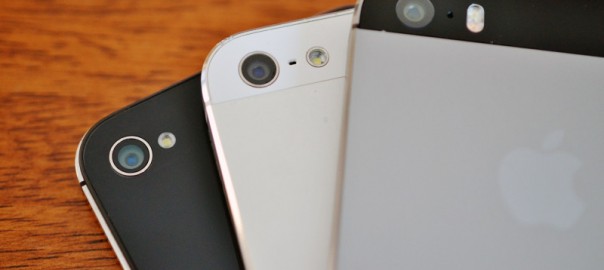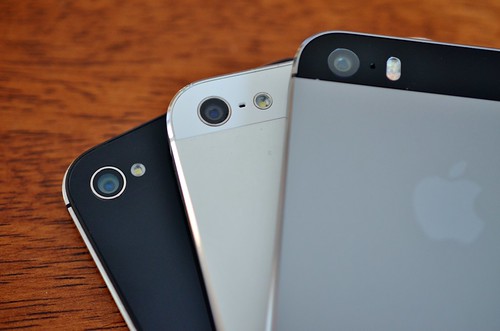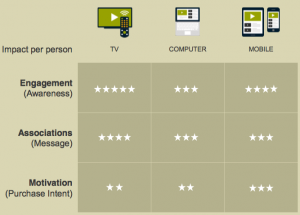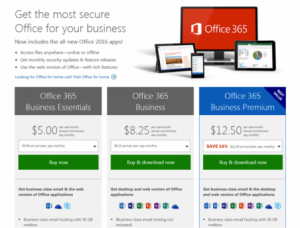How do you optimize your website for iPhone users? Columnist Sonny Ganguly offers key strategies to connect with more customers through your mobile site.
Although the battle between Apple and Android for market share wages on, it’s a safe bet that Apple’s footprint is only going to increase over time. As of 2015, nearly 75% of mobile subscribers in the U.S. own smartphones. That’s roughly 182 million people! If you want to connect with this large audience, you’ll need to come up with some iPhone marketing strategies to target them directly when they visit your website.
Designing specifically for an iPhone is considered easier by many than designing for an Android device because Apple’s iOS is only used on Apple products, so you’ll always provide a consistent experience across a smaller number of device types.
The Android operating system is used across a variety of mobile device manufacturers (Samsung, HTC, Sony), so your designs are not guaranteed to look the same on the various device types.
Whether you’re designing a website to be viewed on an iPhone or an Android, these mobile Web basics will help frame your thoughts:
- Simplify the navigation of your website. With the smaller screen size, there isn’t enough space to show all the links/pages you’d normally include. The only way to fit all the elements you’d like would be to decrease the size of the navigation items, which makes it harder for a mobile user to navigate. Simplify your options or nest some pages under others to make mobile use easier.
- Use buttons, not links. Normal-sized text on a mobile website is often very small, so text links are difficult to press without pinching to adjust the content size. Use large, tappable buttons as calls-to-action whenever possible – not only are these easier to click on a mobile device, they’ll also call more attention to the visitor’s intended path.
- Use a single column layout. Since most mobile devices will shift to offer horizontal or vertical orientation, it’s best to keep your content in a single, fluid column rather than incorporate multiple elements that will need to shift with screen orientation.
- Use fewer images/reduce the file sizes. Every image you add will need to be downloaded by the mobile visitor, which means too many images or images with large file sizes will make your website react more slowly. By using fewer images, your website will run faster and leave more room for your website’s content.
Now that I’ve covered the basics, the following iPhone marketing strategies will help your business attract and convert more customers through your mobile website.
Start With A Mobile-First Makeover
If it has been awhile since you’ve thought about your business’ website on a mobile device, now is the time to take a whole new approach. Because new iPhones are released once or twice a year, it can seem difficult to keep up with new screen sizes, resolutions or processor speeds
But don’t let all the details trip you up. Start by re-examining your website from a mobile-first perspective.
Don’t just think about how you can squeeze your current website into an iPhone screen — take the opportunity to re-evaluate your website’s mobile experience. What are the most important elements? Are there elements that can (or should) be removed to provide a more seamless experience? Even something as simple as reorganizing your website content can help iPhone users get to the point of your site much faster.
I suggest designing your site with mobile wireframes and mock-ups vs. their desktop equivalents. It is always easier to scale a good design up to the desktop, rather than taking a desktop design and force-fitting it for mobile. In addition, it will place added emphasis on creating good UI/UX for mobile.
While it’s important to remove website elements or images that don’t guide an iPhone user through your intended path, the best iPhone marketing strategies will also add website elements to customize the experience for mobile visitors. There’s a whole world of Application Program Interfaces (APIs) that are not available on desktop, including APIs that enable access to the user’s location, the ability to make phone calls at one click, and more.
The easier and more relevant you can make your mobile website, the better the results.
Consider Responsive Web Design
Consider mobile responsive design rather than creating different versions for desktop or mobile. The “m” domain used to separate mobile and desktop versions was originally adopted because of the need for separate code bases, which may be managed by different teams.
This separation can be difficult to maintain if the two versions are not managed by the same team or if both versions are reliant on back-end data to function properly. It can also be detrimental to your brand if the user’s experience on your desktop website is completely different from your mobile site. In addition, with Google’s recent mobile algorithm changes this past April, a separate mobile site will need 1:1 mapping between urls (desktop <> mobile) to ensure SEO performance.
To avoid these potential issues, your business could invest in a mobile responsive web design that automatically changes the layout or content of your website based on the size of the user’s screen. Rather than designing two separate versions of your website and iterating on each as technology trends change, your business could create one website with one experience, no matter the screen size.
This type of strategy is easier to update as the iPhone continues to change and evolve. Plus, it helps you organize your content in a way that all visitors (whether desktop or mobile) will find the most useful and easy to find. For more information on responsive design, visit Google’s Web Fundamentals for developers.
Create A Mobile App
If you’re not ready for responsive design or don’t have the budget to overhaul your website, you could start with an app-first strategy. Even if you have a responsive website, some experts suggest that your responsive design should not be your only iPhone marketing strategy. While mobile apps aren’t necessary for many business types, a mobile app could be right for you if you have data you want to display, use or collect through a mobile device.
Most people think of mobile apps as native, but you can also create powerful in-browser Web apps that look and function like native apps. Since mobile apps are extremely popular on the Apple iOS platform, creating a mobile Web app is one of the easiest iPhone marketing strategies to implement and encourage customer engagement.
Creating a Web app for your business means that your app does not have to be approved every time you make an update, and you can use much of the same code to create an Android Web app if you’d like an app on both platforms. Especially if you don’t want to hire a team of native app designers/developers, Web apps can be built at a much faster and cheaper rate.
The Apple iOS platform allows for HTML, JavaScript and CSS, so you can still create a sophisticated and consistent look for the iPhone as you have for desktop. The big difference between a Web app and a mobile website is that a Web app is designed specifically for the mobile platform, so you can leave your website completely unaltered and drive iPhone visitors to your app.
That being said, native apps tend to perform the best because they tend to have better performance and speed. In the mobile world, every millisecond matters in order to drive success. Ensure you spend time on reducing page load times across your mobile site, responsive website, or mobile Web app.
Maximize Your Conversion Rates
The rest of the iPhone marketing strategies mentioned in this post are related to the creation of a mobile solution, but this point is about optimizing what you already have. The goal of any type of mobile website or app is to see results for your business from your mobile traffic.
Even on a sophisticated device like the iPhone, there are a number of pain points you should address with your mobile website’s content and functionality. We all know it’s difficult to type and fill out forms on an iPhone, so start with that concept and carry it through the conversion process.
Go through your website on an iPhone, think about your visitors’ intent and optimize wherever you can. If users are visiting your mobile site to find your phone number, incorporate “click to call” prominently on your website so they don’t have to copy and paste or type it in themselves.
Feature your location prominently so users searching for your address can find it easily. Whenever possible, use drop-down menus or pre-populated forms so that users don’t have to type as much manually. Reducing the number of visual elements can simplify your website and direct visitors to your call-to-action buttons and forms. Avoid pop-up messages, as they can be hard to close or exit on a small screen.
While deciding how to best optimize your website for iPhone users may seem challenging, it offers a great opportunity for businesses to take advantage of the mobile trend to connect with more customers. Your business has options, so do the research and decide the best strategy for your needs!
Some opinions expressed in this article may be those of a guest author and not necessarily Marketing Land. Staff authors are listed here.
(Some images used under license from Shutterstock.com.)
Marketing Land – Internet Marketing News, Strategies & Tips
(255)








